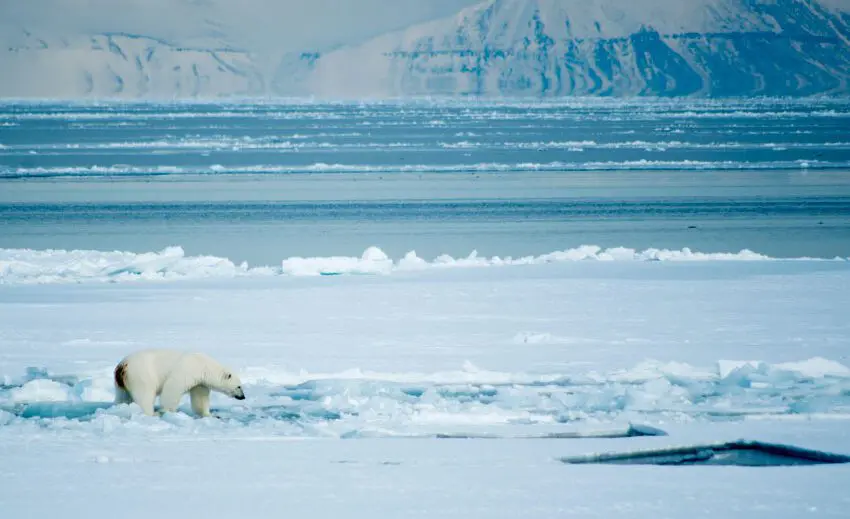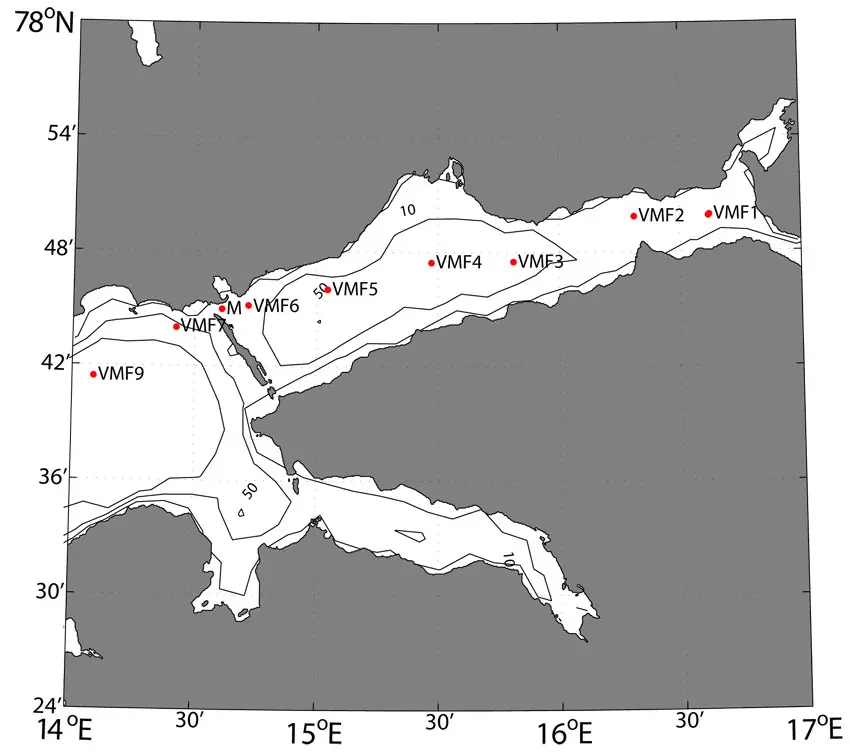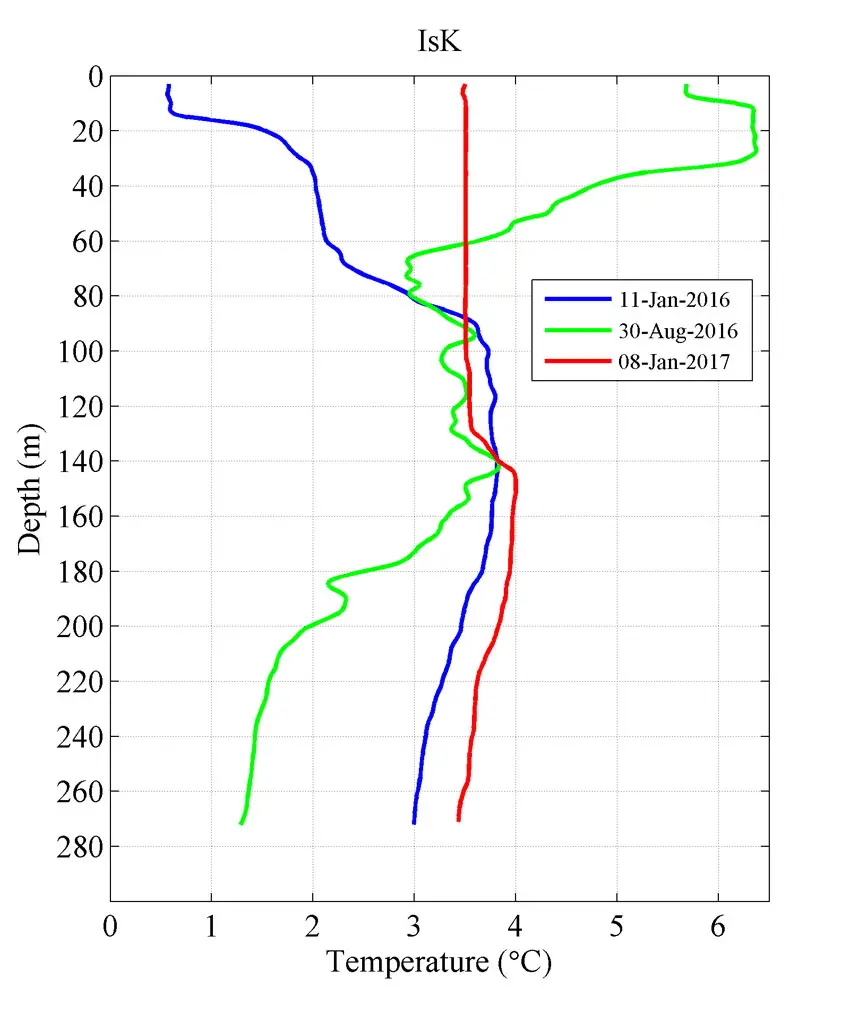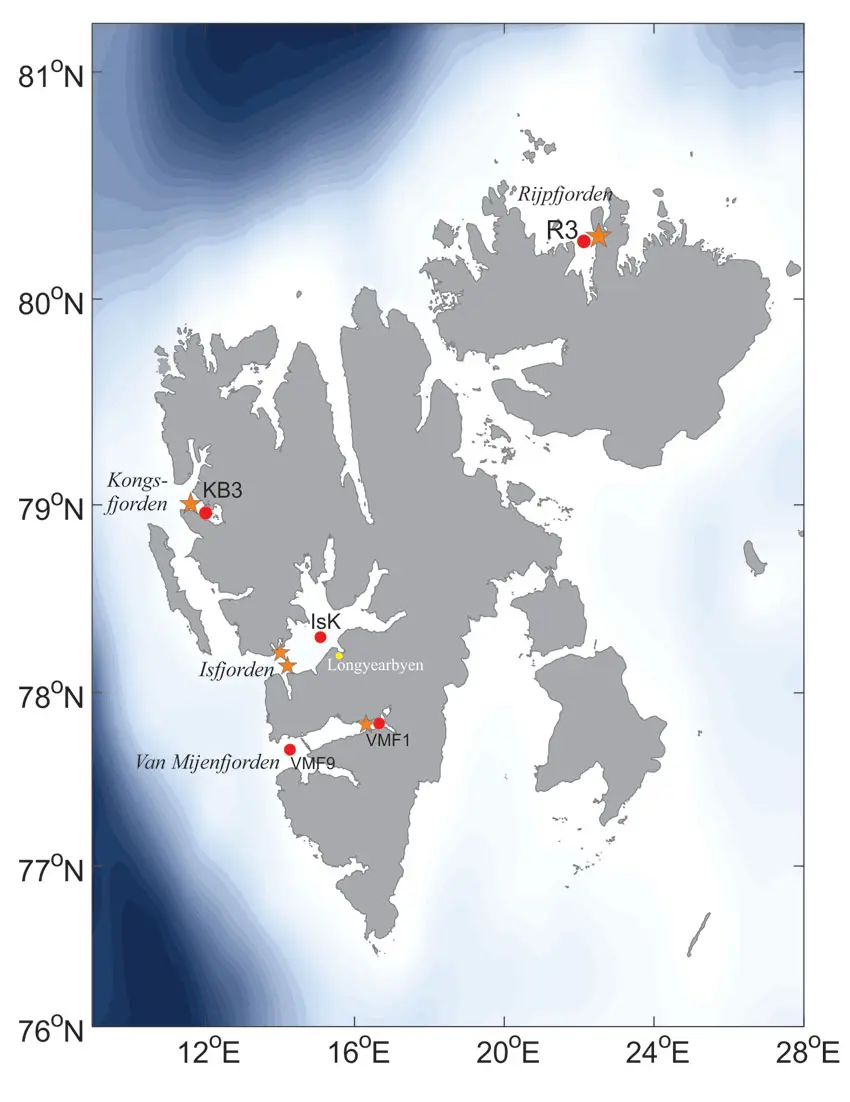Will there be ice on the Svalbard fjords this winter?

Top image: Johannes P. Lorentzen/UNIS.
Last winter we had record-low amount of fjord ice here in Svalbard and the following autumn was unusually warm. But these last few months have been relatively cold. Can we anticipate ice on the fjords this winter? The answer is yes – and no.
31 January 2017
Text and figures: Janne E. Søreide (UNIS), Tove M. Gabrielsen (UNIS), Ragnheid Skogseth (UNIS), Malin Daase (UiT), Bodil Bluhm (UiT) and Eva Therese Jenssen (UNIS).
Two weeks ago researchers and students from the University of Tromsø (UiT) and UNIS with partners from Scotland (SAMS) and the United States ended a 14-day polar night cruise aboard the UiT research vessel Helmer Hanssen. On the cruise, a number of physical and biological surveys in Van Mijenfjorden, Isfjorden, Kongsfjorden and Rijpfjorden were made.
So what are the prospects for the fjord ice this year? Last winter we had record-low amount of fjord ice here in Svalbard and the following autumn was unusually warm. The last two months, however, have been relatively cold and this gives us cause for optimism.
Last year it was the hot air temperatures throughout the winter that specifically prevented the cooling of the surface water and thus the formation of ice. So the lack of ice was not only due to the unusual amount of warm Atlantic water in the fjords. Even the otherwise so “ice-safe” Van Mijenfjorden was mostly colored in black on the ice charts last winter. So what are the prospects for the fjord ice this year?
This is what we have documented so far:
Van Mijenfjorden – here there is hope!
The water temperature in autumn was around 6 degrees in the surface. However, now in January, water has cooled down significantly to nearly zero degrees (0.6 ° C) throughout the water column. If the warm Atlantic waters on the continental shelf outside is still circulating in deeper water than the threshold of the fjord (Akselsundet) and the weather remain cold, there is hope for sea ice on Van Mijenfjorden this year. In 2015 we had an ice thickness of about 50 cm in the middle of the fjord outside Blåhuken, in 2016 there was only a little ice in the inner Van Mijenfjorden and thickness was a maximum of 35 cm. By comparison, in 2015 the sea ice thickness was up to 80 to 90 cm in inner Van Mijenfjorden. This year we will probably not get as good sea-ice conditions as in 2015, but better than the ice conditions in 2016 if the weather stays cold.
Isfjorden – no chance
Isfjorden is comparatively hot (2.8 – + 3.8 ° C) throughout the water column now. In January 2016 it was two degrees colder in the surface than in January 2017. The new weather station in the ocean, which UNIS operates shows that water has cooled down by approximately 1.5-2 degrees since December, when the cold weather set in.
Isfjorden is the largest fjord on Svalbard. It is relatively deep and has large heat capacity where we see that the warm Atlantic water fills the fjord from a 70 m depth and down to the bottom. It is unlikely that there will be ice in Isfjorden this year, even if the cold weather continues. This is because Isfjorden does not have a threshold front that can prevent the inflow of hot water from the Atlantic. The exception is side fjords with threshold and thus limited exchanges with the rest of Isfjorden, as Dicksonfjorden and Billefjorden and possibly Tempelfjorden. On Bjonapynten in Tempelfjorden UNIS has set up a weather station with web camera: https://158.39.149.183/Tempelfjorden/index.html. As soon as it gets enough daylight we can follow with the ice settles here.
Isfjorden ocean-based weather station: https://aanderaaeng1.cloudapp.net/AADI_DisplayProgram/setups/hc_unis/default.aspx
Kongsfjorden and Rijpfjorden – no and yes?
In Kongsfjorden we see much of the same as in Isfjorden. Here it is just as hot and there is hardly any ice here either in winter. In Rijpfjorden in Nordaustlandet the situation is different. It is close to zero degrees throughout the water column and ice will form within a few weeks if the cooling of the surface layer happens at the same pace as in Isfjorden. Rijpfjorden is much colder than the fjords in western Spitsbergen, and is an important inlet for studying Arctic conditions. By comparison, Kongsfjorden is an important fjord to study physical and biological conditions in warmer climates.
These two fjords are important model systems for hot and cold climates. Two ocean observatories have been placed in these fjords and the observatories continuously measure sea surface temperature and salinity throughout the water column, and have done so now for more than 10 years. These ocean observatories are operated by UiT, SAMS and UNIS and is of great importance in research and management made in Svalbard and the Arctic in general.




